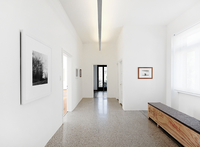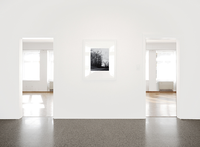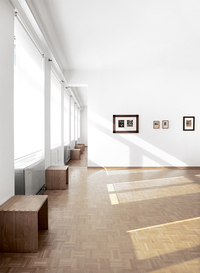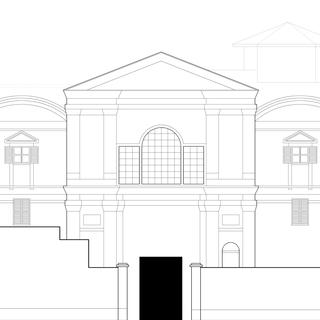Testi tratti dal saggio biografia Tra due mondi. Storia di Philip Rolla di Maria Grazia Rabiolo.
Potete scaricare qui una breve biografia.
-
AMERICA, CALIFORNIA
Philip Rolla lascia la California nel 1962 perché vuole realizzare il suo sogno di costruire eliche per imbarcazioni veloci, e sa che solo a Torino può imparare tutti i segreti del mestiere. Sarà la sua prima meta. Quando parte ha 24 anni, si è appena laureato in economia e ingegneria industriale alla Santa Clara University, ma ha già dato dimostrazione di saper costruire un’automobile e una barca a motore (con cui gareggiare) e di saper disegnare e dipingere. Non dimenticherà mai la casa paterna di Madrone circondata dai frutteti, né gli anni trascorsi accanto ai genitori, al fratello e ai nonni. Farà tesoro di ogni esperienza vissuta fino a quel momento e darà il via alla sua avventura personale, ripercorrendo, al contrario, il tragitto effettuato attorno al 1910 dai suoi quattro nonni piemontesi.
continua...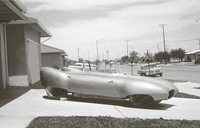
-
ITALIA, TORINO
A Torino Philip Rolla giunge a cavallo tra il 1962 e il 1963, dopo aver visitato alcune città europee e alcune regioni italiane, tra cui, ovviamente, il Piemonte o, per meglio dire, il Monferrato, dove incontra parenti e conoscenti dei suoi nonni. Non ha un soldo in tasca, ma un po’ di fortuna sì, e riesce a incontrare alcuni personaggi fondamentali per la sua formazione: il carrozziere, poi designer Giovanni Battista Pininfarina; il “mago dei motori” Virgilio Conrero; e soprattutto l’ungherese Frank Reisner che gli insegna come rendere più veloci le auto. Due anni di apprendistato senza stipendio, ma con vitto e alloggio pagati. Nel frattempo stabilisce i primi contatti con il mondo della motonautica d’oltre Oceano e per il magnate californiano Bill Harrah realizza la sua prima importante invenzione, un’elica a tre pale per altissima velocità, un unicum a livello internazionale. Conosce anche l’amore in quel periodo. A Finale ligure incontra Renate Michel e con lei, qualche tempo dopo, andrà a vivere in Svizzera, nel Canton Ticino.
continua... -
SVIZZERA, TICINO
L’arrivo in Svizzera risale all’inverno 1964-1965. Philip Rolla abita con Renate dapprima a Pregassona, poi a Lugano Besso e successivamente a Vernate, nel Malcantone. Nel 1968 si stabiliscono sulle rive del lago del Ceresio, a Pojana, tra Riva San Vitale e Brusino Arsizio, in un ex grotto, “Al San Giorgio”. Phil occupa il garage e ne fa un laboratorio perfetto, con tutti i suoi attrezzi. È lì, sotto una tela di paracadute, che si butta nella creazione di eliche sempre più innovative e performanti, seguendo il suo istinto personale, fatto di calcolo matematico e di manualità. Arriva a produrre eliche con otto pale! In quel periodo ha la fortuna di stringere amicizia con alcuni ticinesi che lo aiutano a comprendere come muoversi in un ambiente per lui tanto nuovo: Remo Cattaneo, Carlo Ortelli e Dolf Schnebli, l’architetto maestro del cemento armato. Resta a Pojana fino al 1986, dopo di che, rimasto vedevo, si trasferisce nell’ex cementificio alle gole della Breggia a Balerna.
continua... -
LE ELICHE PIÙ VELOCI DEL MONDO
C’è un segreto nel successo di Philip Rolla ed è credere nella bellezza. Vale anche per le sue eliche: per funzionare al meglio devono anche essere esteticamente pregevoli. Come ci riesce? Completando ogni creazione con l’ultimo fondamentale tocco della mano dell’artigiano. Dalle primissime, venute alla luce a Torino, alle più recenti, frutto delle tecniche più avanzate, è quest’ultimo passaggio a fare la differenza. Lo sanno bene i committenti di scafi da competizione e quelli di imbarcazioni da diporto, yacht di lusso, navi militari o traghetti. Lo ha riconosciuto pure la Royal Institution of Naval Architects (Rina) che nel 2000, a Londra, gli consegna per le sue eliche la prestigiosa Small Craft Group Medal. Le eliche hanno un ruolo determinante, nel processo di costruzione di ogni imbarcazione sono il punto di partenza. È questo il principio alla base del successo di Phil.
continua...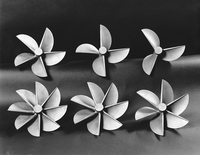
-
AZZURRO ROLLA
L’intero percorso professionale di Philip Rolla è metaforicamente rappresentato dal passaggio dalla carta intestata con il nome Motonautica, la Casella postale e il timbro della Camera di commercio americana in bella evidenza del 1963, quando era appena arrivato a Torino, al ROLLA scritto tutto maiuscolo, stile stencil, in un inconfondibile azzurro che ricorda insieme acqua e cielo, tuttora presente. La sede della Rolla SP Propellers non è più quella alle Gole della Breggia, dal 2005 è situata a Novazzano. Sono cambiate molte cose, Phil si è ritirato dagli affari correnti, ma la sua mente e la sua mano continuano ad essere in azione. Nel suo passato ci sono i cantieri più all’avanguardia, i suoi collaboratori più stretti, e gli ingegneri innovativi. C’è insomma la consapevolezza del valore del lavoro di gruppo, che va ad aggiungersi al suo personale, in un’ottica di costante adeguamento ai nuovi mezzi e alle nuove tecnologie. Sono esperienze fondamentali, indispensabili anche successivamente quando mette in campo nuovi progetti, come quelli maturati nell’ambito del collezionismo di opere d’arte e di fotografie.
continua... -
NEL MONDO DELL'ARTE
La propensione di Philip Rolla per le arti figurative risale addirittura all’infanzia, quando realizzava copie da opere di Michelangelo e le vendeva agli amici del padre per pochi centesimi. A scuola, primarie e secondarie, in disegno aveva ottimi voti. Da adulto ha continuato per lavoro a tenere la matita in mano, ma ha anche costantemente coltivato l’interesse per l’arte contemporanea, specialmente per quella minimalista americana. Ad avvicinarlo concretamente sono stati, fin dagli Anni Sessanta e Settanta, due amici ticinesi, lo scultore Pierino Selmoni e il pittore Flavio Paolucci, a loro volta presentati a Phil dall’architetto Dolf Schnebli. Tre figure determinanti nella sua formazione culturale. Schnebli gli apre gli occhi sul concetto di casa concepita come “macchina da abitare”, Selmoni lo introduce nell’ambiente artistico ticinese e Paolucci lo porta ad ampliare i propri orizzonti conoscitivi. È grazie a Paolucci, per esempio, che a Venezia, nel 1976, “scopre” le pietre allineate di Richard Long.
continua...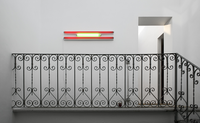
-
COLLEZIONISMO
Collezionare opere d’arte, in particolare di artisti minimalisti americani, e fotografie è un’attività che Philip Rolla coltiva da decenni con grande soddisfazione, soddisfazione sua e di sua moglie Rosella. La vicinanza con questi artisti ha avuto sempre una grande influenza anche sul modo di concepire il suo lavoro. Le prime due opere acquistate insieme alla moglie Rosella, dopo quelle degli amici ticinesi Pierino Selmoni e Flavio Paolucci negli anni Settanta, sono un piccolo quadro rettangolare con un parallelepipedo sdraiato di Sol LeWitt, e una sorta di libro sfogliabile di Robert Rauschenberg, un’autentica “Bibbia” per Phil. L’interesse per la fotografia giunge poco dopo, all’inizio degli anni Duemila. E per primi entrano in casa, a breve distanza di tempo, un’immagine di un bagno di un’abitazione di Mies Van Der Rohe scattata dal fotografo tedesco Thomas Ruff e un orizzonte marino del giapponese Hiroshi Sugimoto.
continua...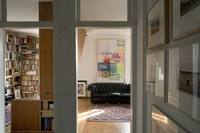
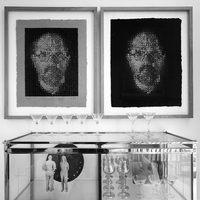
-
BORGOVICO33, COMO
Philip e Rosella Rolla considerano l’arte come un bene prezioso da condividere con amici, appassionati e anche semplici curiosi. È con questo spirito generoso e innovativo che danno vita a partire dal 2002 all’Associazione culturale borgovico33. Rosella ricopre il ruolo di direttrice e di coordinatrice del Comitato scientifico. Ispirati dalla Fondazione Chinati a Marfa dell’artista texano Donald Judd, scelgono come sede l’ex chiesa del convento di Santa Caterina a Como, un edificio del 1634 usato nei secoli con varie finalità e poi abbandonato. Lo ristruttura, con tocco leggero e conservativo, l’architetto Paolo Brambilla. Verranno ospitati, nell’arco di sette anni, fotografi, artisti, musicisti, attori e architetti, italiani, svizzeri e stranieri, per un totale di venticinque manifestazioni. A dare il via, nell’aprile del 2002, è la mostra Pino Musi, Giuseppe Terragni. A chiudere, nella prima metà del 2008, Franco Vimercati. Un viaggio verso la purezza dell’immagine. Fotografie dal 1973 al 2001. Un fotografo all’inizio dell’avventura e un fotografo a suggello. Di certo, non per caso.
continua...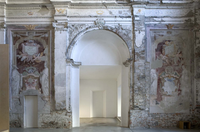
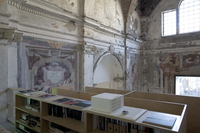
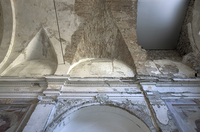
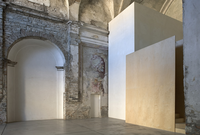
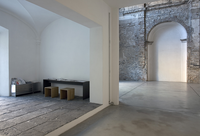
-
FONDAZIONE ROLLA, BRUZELLA, SVIZZERA
La passione per la fotografia cresce di anno in anno e di conseguenza anche l’archivio della Collezione continua a registrare nuovi arrivi. A Philip Rolla interessa che l’immagine ritragga l’oggetto per quello che è, senza forzature, ma con un punto di vista speciale, capace di restituirgli una reazione emotiva profonda. È la lezione che apprende leggendo L’occhio del fotografo di John Szarkowski e vale per tutti i soggetti da lui amati: architetture, fabbriche, oggetti, piante.
Dal 2010 questo patrimonio viene messo a disposizione di chi è interessato. Rosella e Philip Rolla raggiungono un accordo con il Comune di Bruzella (oggi di Breggia) per l’utilizzo dell’ex scuola dell'infanzia. Qui propongono sistematicamente delle mostre tematiche. Di un solo autore, collettive o sotto forma di dialogo a due, ogni esposizione è corredata da un piccolo prezioso catalogo. Il primo appuntamento è stato con il fotografo ceco Josef Sudek. Titolo dell’esposizione: Cacciatore di magia. Copertina del volume di colore giallo. Testo introduttivo firmato dal poeta ticinese Alberto Nessi.
continua...